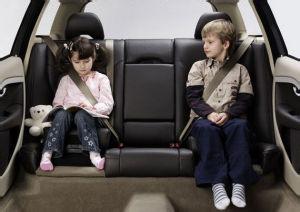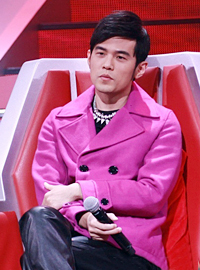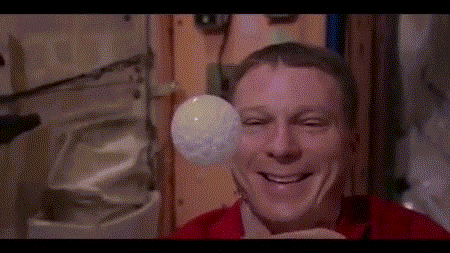大家都知道雏菊的英文名是daisy,但你知道它的含义吗?
Daisy来自于古英语短语dægesege,表示“日之眼”。因为雏菊黎明花开,黄昏花谢,好像生长于天地之间的眼睛一样。
 不过,兰花的英文名就没有这么好听了,不仅不优雅,甚至名字还有点污。
不过,兰花的英文名就没有这么好听了,不仅不优雅,甚至名字还有点污。康乃馨
Carnation [kɑː‘neɪʃ(ə)n]

There are two etymologies for carnation, a term found in English in the early 1500s。 According to one, carnation may be a corruption of coronation, perhaps because the flower‘s toothed petals resembled crowns or because the flowers were worn, crown-like, as garlands。
Carnation(康乃馨)在16世纪初期出现在英语中,关于carnation的词源有两种说法。其中一种说法认为,carnation可能是coronation(加冕礼)的变体,因为康乃馨的锯齿状花瓣好像皇冠,又或者是因为人们把这种花当花冠佩戴。

The second etymology comes from the flower‘s original color, and roots carnation in the Middle French carnation, “pink complexion”, from the Latin root caro, “flesh”, source of less delicate words like carnal and carnage。
第二种说法与康乃馨的原色有关,认为carnation这个名字来自中古法语carnation(粉红的肤色),这个单词的拉丁语词根是caro(肉体),与carnal(肉欲的)、carnage(大屠杀)等不太好听的单词词根相同。
菊花
Chrysanthemum [kri‘sænθəməm]

The word chrysanthemum, emerging in English in the late 1500s, comes from the Greek krysanthemon, meaning “gold flower”。 The first component, krysos (“gold”), shows up in the biological term chrysalis。
Chrysanthemum在16世纪末期传入英语,这个单词源于希腊语krysanthemon(金色的花朵)。第一个组成部分krysos意为“金色的”,是形容蝶蛹的生物学术语。
 莫奈笔下的菊花
莫奈笔下的菊花The second, anthos (“flower”), appears in anthology, literally “a collection of flowers”, first used for a compilation of small poems in the early 1600s。
Anthos表示“花朵”,它也是anthology的词根。Anthology意为 “鲜花大全”,在17世纪初期时,这个单词用来表示短诗集。
雏菊
Daisy

The word daisy has deep roots in the English language。 As attested to in some of English‘s earliest records, daisy comes from the Old English phrase dægesege: the “day’s eye”, as the flower‘s white petals close at dusk and open at dawn, like the eye of the day as it sleeps and wakes。
Daisy是一个地地道道的英语单词。根据一些英语相关的早期记载,Daisy来自于古英语短语dægesege,意思是“日之眼”。白色的雏菊黎明花开,黄昏花谢,就像是每一天的眼睛一样睡去醒来。
银莲花
Anemone [ə‘nemənɪ]

The anemone is also known as the windflower。 Indeed, the word anemone, first attested in English in the mid-1500s, probably comes from a Greek word literally meaning “daughter of the wind”。
Anemone(银莲花)也被称为风之花。事实上,anemone是在16世纪中叶首次出现在英语中的,它可能起源于一个希腊单词,意思是“风的女儿”。

It‘s said that the brightly colored petals of this flower only opened when the wind blew。 Sea anemones took their names in the late 1700s on their likeness to the flowers。
据说,明媚鲜艳的银莲花只有在风吹过时才会绽放。因为银莲花和海葵有几分相似,到18世纪末期时,人们将海葵(一种长在水中的食肉动物)称为sea anemone。
勿忘我
Forget-me-not

The name forget-me-not was a direct translation from the Old French ne m‘oubliez mye (“do not forget me”)。
勿忘我的英文名字forget-me-not直接翻译自古法语“ne m‘oubliez mye(勿忘我)”。

Renaissance romantics believed that, if they wore these soft-colored flowers, they would never be forgotten by their lovers, making the flower a symbol of fidelity and everlasting love。
文艺复兴时期的浪漫主义者认为,如果他们戴上这种色彩柔和的花朵,就永远不会被爱人遗忘。勿忘我因此成为忠诚永恒爱情的象征。
兰花
Orchid [‘ɔːkɪd]

Orchids are a diverse family of extremely elegant flowers, but the literal meaning of their name, documented in English in the early 1840s, is a bit earthier, shall we say。
兰科植物(orchid)多种多样,都极为优雅,但是它们的名字直译过来却有点,怎么说呢,粗俗。据记载,兰花的英文名orchid出现在19世纪40年代。

Orchid comes from the Greek orkhis, meaning “testicle”。 The flower‘s bulbous roots, often paired, have long been thought to resemble those male organs。
Orchid来自希腊语orkhis,也就是“睾丸”的意思。由于兰花的球茎根通常是成对的,长期以来,人们一直认为其和男性睾丸相似。
牡丹
Peony [‘piəni]

The peony, a word found in Old English, was believed to have healing properties in early medicine, which is why its name might honor Paion, the physician of the gods in Greek mythology。
牡丹的英文名peony起源于古英语,在早期医学中,人们认为牡丹具有疗伤功效,因此,可能根据希腊神话中众神的医生Paion,将其命名为peony。
杜鹃
Rhododendron [,rəudə‘dendrən]

Like many other flower names, rhododendron enters the English record in the mid-1500s。 The name literally means “rose tree” in Greek。 It‘s an apt name, for this shrub or small tree blooms with brilliant, rose-colored flowers。
和其他众多鲜花名一样,rhododendron(杜鹃)是16世纪中叶传入英语中的。Rhododendron在希腊语中的意思是“玫瑰树”。这个名字非常贴切,因为这种像小树一样的灌木植物能开出鲜艳的玫瑰色花朵。
郁金香
Tulip

Passing into English via Dutch or German in the late 1500s, tulip actually comes from the Turkishtülbent, based on the Persian dulband: “turban”。
16世纪晚期,tulip(郁金香)从荷兰语或德语中传入英语,这个单词实际上源自于Turkishtülbent,后者来自于波斯语dulband,指“穆斯林的头巾”。

The flower, to its ancient namers, resembled the male headwear worn throughout the Middle East, India, and parts of Africa。
按照郁金香古代名字的意思,这种花好像中东、印度以及非洲部分地区男性的头饰。
紫罗兰
Violet

Before we had the color violet, recorded by the late 1300s, we had the flower violet, emerging some decades earlier in the same century。
据记载,在14世纪末期人们用violet表示紫罗兰色,而在此前几十年,violet就已经用来指代紫罗兰花了。
Violet grows out of the French violete or violette, a diminutive of viole, in turn the Latin viola, its name for this distinctively purple flower。
Violet来自于法语中的 violete或violette,它们是viole的指小词,而viole来自于拉丁语单词 viola,也就是拉丁语中对这种独特的紫色花朵的称呼。

This viola has no etymological relationship to the instrument。 Some scholars suspect Latin got viola from the Greek name for the plant, ion。
拉丁文viola(英语中有中提琴的意思)和中提琴毫无关系。一些学者认为,它来自于希腊语中对紫罗兰的称呼,ion。
你最喜欢哪种花?
来源:口袋英语精选微信公众账号
责任编辑:陈熙







































































































